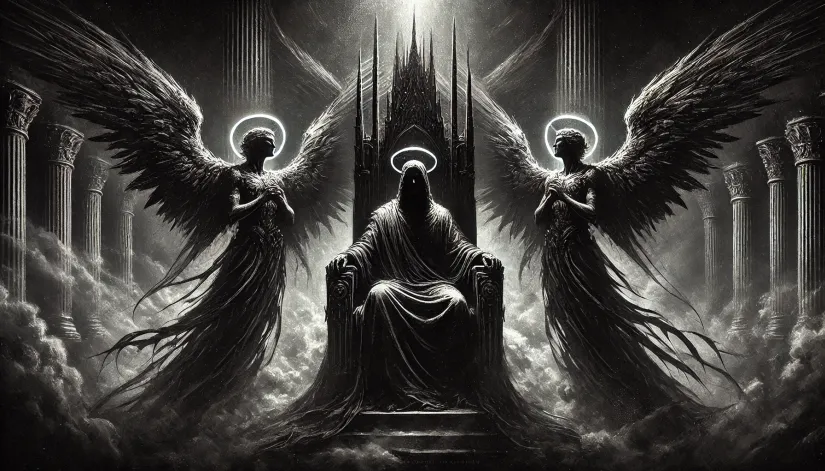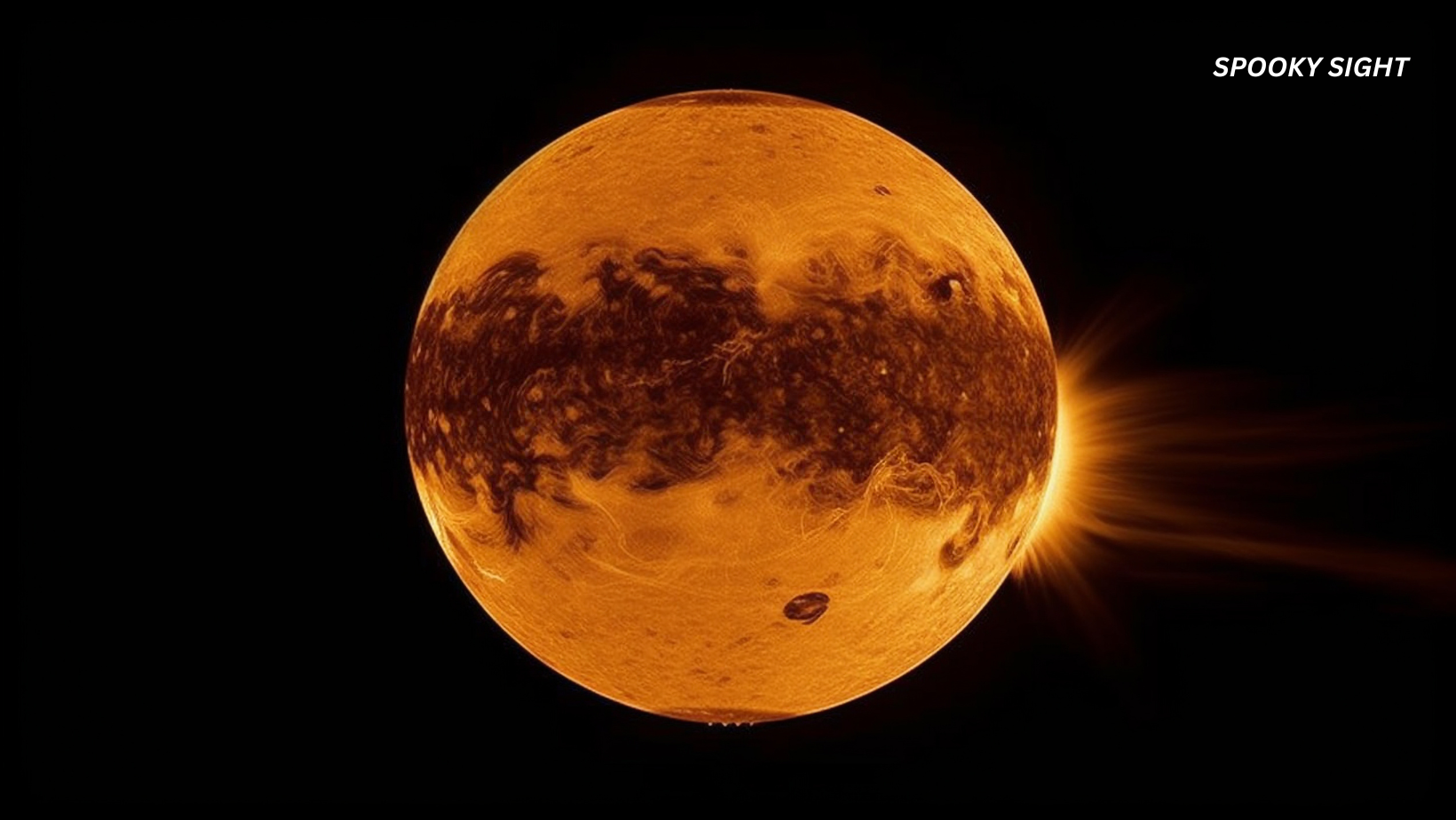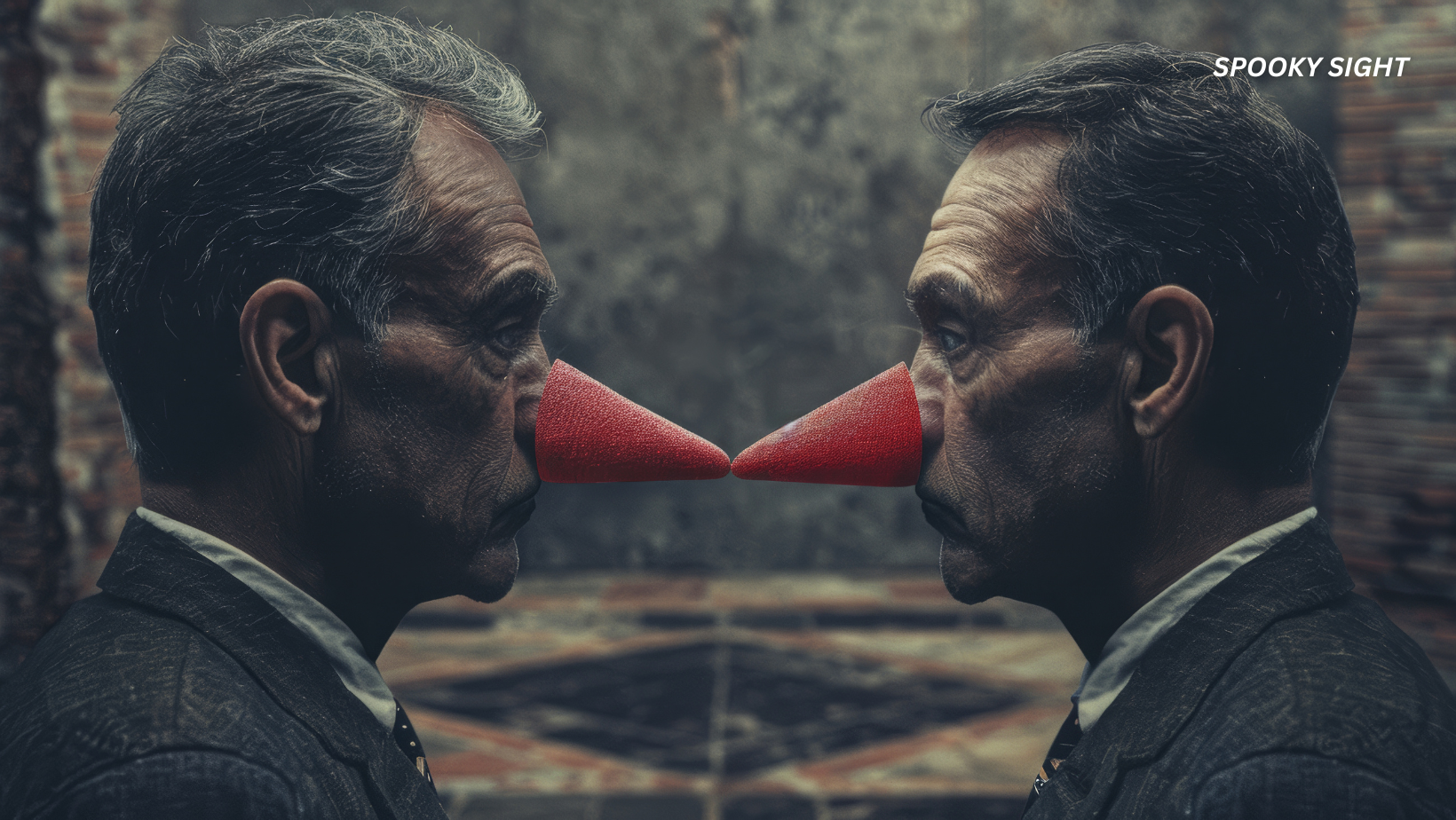The hierarchy of angels (ranks of angels) is a fascinating and complex aspect of Christian theology. So much so that many proposed rankings detail the roles and statuses of these celestial beings.
While the most commonly recognized hierarchy is the one outlined by Pseudo-Dionysius the Areopagite—separating angels into three spheres with nine distinct orders—other traditions (including Jewish mysticism and Islamic teachings) offer different classifications.
In this article:
The Hierarchy of Angels According to Pseudo-Dionysius
Unlike the hierarchy of Hell (which reflects chaos and rebellion), the angelic hierarchies show divine order and purpose.
But let’s start with the beginning. Before discussing the hierarchy of angels he proposed, let’s see who exactly Pseudo-Dionysius was.
Who Was the Mysterious Pseudo-Dionysius the Areopagite?
First off, don’t confuse him with the Dionysius mentioned in the New Testament (you know, the guy converted by Paul in Athens).
Pseudo-Dionysius was an anonymous (some say downright mysterious) Christian theologian around the late 5th or early 6th century.
He adopted the pseudonym “Dionysius the Areopagite.” Why? Most likely to lend his writings more authority and continuity with early Christian belief. However, his true identity remains unknown. Nonetheless, his impact on Christian theology is undeniable.
One of his most noteworthy contributions is “The Celestial Hierarchy.” Here, he lays out a detailed classification of angels (a complex hierarchy of angels, if you like). Written sometime around the turn of the 6th century, his treatise is part of a broader collection of works (known as the “Corpus Areopagiticum“).
The collection includes titles like “The Divine Names,” “The Mystical Theology,” and “The Ecclesiastical Hierarchy.” Over centuries, these writings have had a powerful influence on both Eastern Orthodox and Western Christian ideas.
In “The Celestial Hierarchy,” Pseudo-Dionysius categorizes angels into nine orders, divided into three spheres. The first sphere includes the Seraphim, Cherubim, and Thrones—the ones closest to God. They’re all about divine authority.
The second sphere includes Dominions, Virtues, and Powers. These angels manage the orders below them and keep the universe running.
Finally, the third sphere consists of Principalities, Archangels, and Angels. These are most directly involved with us (humanity). They guide, teach, and protect us on Earth.

The Celestial Hierarchy
OK, so now you know who proposed the most widely accepted hierarchy of angels. But what exactly does this hierarchy look like? Well, each angelic order has a unique function. From governing the divine realm to interacting directly with humankind.
Let’s take a closer look at these different spheres, starting with those closest to the Divine Presence:
First Sphere
These angels are closest to God. They are primarily concerned with the direct contemplation of the Divine and the execution of God’s will:
1) Seraphim
Seraphim are the highest order of angels—known for their fiery and burning love for God (the word “Seraphim” means “the burning ones”).
They continuously surround the throne of God. They sing praises and purify themselves (and others) with their fervent love and devotion.
2) Cherubim
The Cherubim are the second order in the first sphere. They are the angels of divine knowledge and wisdom.
Cherubim are usually portrayed as guardians of heavenly mysteries. Their role is to illuminate the minds of others with the knowledge of God.
They are also seen as protectors of sacred spaces (such as the Garden of Eden or the Ark of the Covenant).
3) Thrones
Thrones are the third order in the first sphere. Symbols of divine justice and authority. They embody the spirit of humility and peace.
Thrones serve as the chariots of God—supporting His throne and spreading divine justice throughout the cosmos.
Second Sphere
These angels govern the lower choirs of celestial beings. Their role is to maintain the divine order across the cosmos.
1) Dominions (Dominations)
The Dominions are the highest order in the second sphere. They oversee the duties of lower angels. They also must ensure that God’s will is executed.
Finally, the Dominions mediate the power of the higher choirs to the lower ones and handle angelic duties.
2) Virtues
Virtues are the second order in the second sphere. They bestow divine grace and perform miracles. Virtues also govern the elements and oversee the natural world.
3) Powers
The Powers are the third order in the second sphere (often referred to as warrior angels).
They maintain the balance of power between good and evil, protecting the world from demonic forces, and guiding human souls through spiritual warfare.
Third Sphere
According to Pseudo-Dionysius, in the hierarchy of angels, the third sphere consists of angels that interact most directly with the material world and humanity—guiding, protecting, and delivering messages from God.
1) Principalities
The Principalities are the highest order in the third sphere. They oversee nations and cities, guide the leaders, and guarantee that the divine will is reflected in governance and administration.
2) Archangels
Archangels are the second order in the third sphere and serve as the chief messengers of God.
They deliver important messages to humanity and often play key roles in significant events (such as the Annunciation by Gabriel). Archangels also act as leaders in the heavenly host.
3) Angels
The Angels are the lowest order in the hierarchy of angels. On the other hand, angels are the ones most involved in human affairs. So, they are important nonetheless.
For example, guardian angels (who protect and guide each of us) belong to this order. They typically act as intermediaries between God and humanity. Their role is to guide people in their spiritual journey.

Variation of the Pseudo-Dionysius’ Ranking
While Pseudo-Dionysius laid the foundation for the angelic hierarchy, various traditions (and mystical texts) have expanded on this framework.
The hierarchy of angels proposed by Pseudo-Dionysius wasn’t necessarily changed. However, new authors and religious texts proposed names and roles for the different orders of angels.
The ranking below (compiled by us at SpookySight) reflects this expanded hierarchy of angels, combining ideas from Jewish mysticism, Christian theology, and apocryphal literature:
Variant of the First Sphere
Seraphim:
- Seraphiel: Leader of the Seraphim.
- Metatron: Though often associated with high-ranking roles, Metatron can also be placed among the Seraphim.
- Jehoel (Yahoel): Linked with the Seraphim (particularly in Jewish mysticism).
- Sandalfon: Metatron’s twin. Responsible for delivering the human’s prayers to God.
Cherubim:
- Ophaniel: Divine knowledge and wisdom, overseeing the safeness of sacred truths.
- Kerubiel: Chief among the Cherubim in certain Jewish esoteric practices.
Thrones:
- Oriphiel: A leader among the Thrones. Sometimes, it is cited as the angel of divine justice.
- Raziel: The keeper of the secrets of the universe.
- Zaphkiel: Another chief of the Thrones. Zaphkiel is linked to deep contemplation and the orderly structure of the cosmos.
Variant of the Second Sphere
Dominions:
- Zadkiel: A leader of the Dominions. The angel of mercy and the careful distribution of responsibilities among other angels.
- Hashmal (Chasmal): He guides the energy and power that sustains the heavens.
- Muriel: Peace and harmony.
Virtues:
- Haniel: Grace, beauty, and the distribution of divine blessings. Often invoked for strength in spiritual matters.
- Tarshishim: Can control the elements and preserve natural order.
Powers:
- Camael: A leader among the Powers. He is a symbol of strength, courage, and a shield against evil forces.
- Kamael: Another protector of the Heavens. He helps maintain the balance of power between good and evil.
- Verchiel: He protects and guides human souls during their spiritual journey.
Variant of the Third Sphere
Principalities:
- Nisroc: Oversees nations and leaders.
- Anael: Love and relationships.
- Amael: Sometimes mentioned as a ruler of the Principalities. Amael guides spiritual leaders and influences the moral compass of societies.
Archangels:
- Michael: The most renowned Archangel. Michael defends against evil, leading heavenly armies and defending the faithful.
- Gabriel: God’s primary messenger.
- Raphael: The healer. He can perform miracles and bestow God’s grace.
- Uriel: Wisdom and guidance. Uriel is often invoked for enlightenment and understanding (especially in moments of crisis).
- Sariel: Death and the guidance of souls.
- Raguel: Angel of justice. Raguel maintains fairness and balance.
- Remiel: Hope and resurrection. Remiel will play an essential role in the final judgment and the restoration of the righteous.
- Jehudiel: The angel of work, success, and divine encouragement. Jehudiel supports those striving toward their spiritual and material goals.
- Barachiel: The bestower of blessings.
- Phanuel: An Archangel often mentioned in apocryphal texts. He is associated with repentance and divine face-to-face encounters. In some traditions, Phanuel oversees the repentance of sinners.
- Ithuriel: Another lesser-known Archangel. Ithuriel is the angel of hidden truths. His name means “discovery of God.”
Angels (Guardian Angels):
- Guardian Angels: The lowest order within the hierarchy of angels.

Hierarchy of Angels According to Gregory the Great
Now, you might wonder how these ideas spread so widely. Well, in the 9th century, an Irish monk named John Scotus Eriugena translated the works of Pseudo-Dionysius into Latin.
This translation changed everything for Western Christian theology.
Medieval theologians (such as Thomas Aquinas and Albertus Magnus) embraced these concepts and further developed them in their own writings. Aquinas, in particular, focused on these ideas in his work “Summa Theologica.”
But he not only adopted the concept of nine orders of angels. He also went in-depth into their roles, functions, and the nature of their intellect and will.
Aquinas’s work (which was all based on the Pseudo-Dionysius writings) resonated well with the broader Christian tradition. And so, the concept of a hierarchy of angels (an angelic hierarchy) became firmly entrenched in Western Christian religion.
But it wasn’t just Aquinas who shaped our understanding of angels. Gregory the Great (who was Pope from 590 to 604, during a period marked by political turmoil and the spread of monasticism) also had much to say on the matter.
One of Gregory’s critical contributions to our understanding of the hierarchy of angels comes from his “Homilies on the Gospels” (Homiliae in Evangelia). He wrote this collection of 40 homilies between 590 and 591 (when Lombards invaded Rome and the plague ravaged the city).
Gregory adopted Pseudo-Dionysius’ nine choirs of angels. But also added a “personal touch.” For instance, he organized the nine choirs of angels into three triads (a structure reflecting Gregory’s pastoral concerns).
For Gregory, angels were not just distant, ethereal beings. They were directly entangled in the lives of all Christians. Intermediaries who carry out God’s will. Who protect the faithful and transmit divine messages. Active participants in the spiritual battles of the world.
Moreover, Gregory’s angelology is closely linked to his interpretation of the Church (as a reflection of the heavenly order).
Just as the Church was hierarchical—with the Pope at its head—so too was the celestial order. With angels organized in a structured manner under the sovereignty of God.

Hierarchy of Angels According to the Book of Enoch
While Pseudo-Dionysius was the “authority” regarding angelic hierarchy, he wasn’t the only voice in the conversation.
For instance, in most Christian traditions, the Book of Enoch (a collection of apocalyptic also known as 1 Enoch to distinguish it from other later writings) isn’t part of the canonical Bible. However, it’s a fundamental text in the Jewish apocrypha and has influenced Christian thought as well.
Who was this Enoch? Well, we don’t really know much about him.
He was a mysterious and somewhat enigmatic character who appears in the Book of Genesis. According to Genesis 5:21-24, Enoch lived 365 years before he “walked with God; and he was not, for God took him.”
The Book of Enoch itself is traditionally believed to have been written sometime between the 3rd century BCE and the 1st century CE. Although it was likely composed over several centuries by multiple authors.
The text comprises several sections, including the Book of the Watchers, Book of Parables, Astronomical Book, Book of Dreams, and Epistle of Enoch.
What do all these have to do with the hierarchy of angels? Enoch (as described in the Book of Enoch) was a righteous man granted visions of heaven and the divine order—including of the different classes of angels.
Here is the hierarchy of angels according to the Book of Enoch:
1) The Watchers (Grigori)
The Watchers are a specific group of angels initially tasked with watching over humanity. They are particularly significant in 1 Enoch because of their rebellion against God.
The Watchers descended to Earth, took human wives, and taught humanity forbidden knowledge. Their actions eventually led to widespread sin and corruption.
The Watchers are:
- Semyaza: The leader of the fallen Watchers. He is the one who orchestrated the rebellion.
- Azazel: A prominent fallen angel. The one who taught humanity the arts of warfare, weapon-making, and cosmetics. All these are seen as corrupting influences (forbidden knowledge).
2) The Archangels
1 Enoch mentions several Archangels who play crucial roles in the divine order. Particularly in relation to the Watchers and their aftermath. These Archangels deliver messages, execute God’s judgment, and guide the faithful.
The Archangels are:
- Michael: The leader of the archangels. Often depicted as a protector and warrior who confronts the forces of evil.
- Gabriel: Tasked with delivering God’s messages. And also dealing with the Watchers.
- Raphael: The one who bound Azazel and healed the Earth from the corruption caused by the fallen angels.
- Uriel: Guides the heavenly bodies and delivers warnings about the impending judgment.
- Raguel: Acts as the avenger of the heavens. He also enforces divine justice.
- Sariel: Sometimes associated with instructing humanity. Notably in the context of judgment and divine law.
- Remiel: Responsible for the resurrection of the dead and the final judgment.
3) Other Angelic Beings
The Book of Enoch also references other classes of angels. However, it does not provide extensive details about them in the same way as the Watchers or Archangels.
Mentioned groups:
- Seraphim: Generally associated with the presence of God and the purification of souls.
- Cherubim: Mentioned as protectors and guardians. Usually linked to the throne of God.
- Ophanim: Also known as the “wheels” or “thrones.” These are associated with the divine chariot and the presence of God.

Hierarchy of Angels According to Jewish Mysticism (Kabbalah)
Kabbalistic tradition links different classes of angels to the ten Sefirot (divine attributes through which God interacts with the world). Each class of angels has a specific role in the cosmic order, corresponding to a particular Sefirah.
The hierarchy of angels, according to Kabbalah, is this:
1) Chayot HaKodesh (Holy Living Creatures)
Sefirah: Keter (Crown)
The Chayot HaKodesh are among the highest order of angels—often associated with the divine presence itself. They are closely linked to the innermost aspects of God’s will and are considered at the forefront of the holy throne.
In Kabbalistic literature, these celestial beings are sometimes identified with the Seraphim and Cherubim. Perhaps due to their proximity to God and roles as guardians of the divine light.
Metatron is sometimes included in this group as a unique angel who serves as the celestial scribe. He is considered the highest of angels. Metatron communicates divine knowledge and is occasionally seen as the guide of the Chayot HaKodesh.
2) Ophanim (Wheels)
Sefirah: Chokhmah (Wisdom)
The Ophanim are the “wheels” seen in Ezekiel’s vision (Ezekiel 1:15-21).
These angels symbolize the dynamic movement of divine energy and are integral to the functioning of the heavenly chariot (Merkabah). They represent the wisdom and intelligence that guide the cosmos.
Among Ophanim, the angel Raziel (keeper of God’s mysteries and secrets) symbolizes divine wisdom and the Sefirah of Chokhmah.
3) Seraphim
Sefirah: Binah (Understanding)
The Seraphim are fiery angels known for their intense love and purity. Kabbalistic tradition links them to Binah, the Sefirah of understanding.
The Seraphim also are purifying angels who help guide the souls through spiritual enlightenment and repentance.
4) Malakim (Messengers)
Sefirah: Tiferet (Beauty)
Malakim are divine messengers who bridge the gap between the sacred and the earthly realms. They are tied to Tiferet—beauty and harmony.
The Malakim carry out God’s will in the physical and spiritual worlds, acting as intermediaries between God and humanity.
Archangel Michael is sometimes placed within this category. Especially given his role as a messenger of mercy and protector.
5) Ishim (Manlike Beings)
Sefirah: Malkhut (Kingdom)
The Ishim are the lowest order of angels. More closely linked to the material world and humanity than the divine. They are mediators between the holy and the human realm. They guide human souls and assist in building God’s kingdom on Earth.
Sandalphon (the twin of Metatron) is one of the Ishim. This interpretation contrasts with other proposed classifications of angels, where Sandalphon is among the highest-ranking angels.

The Hierarchy of Angels According to the Quran and Hadith
Islamic angelology does not have a formalized hierarchy of angels like the Christian three-spheres model. Instead, Islamic teachings categorize angels based on their specific roles and duties:
Highest Angels:
- Jibril (Gabriel): Chief of all angels and one of the most influential angels. Jibril is the angel of revelation. He is responsible for delivering God’s messages to the prophets (including revealing the Quran to the Prophet Muhammad).
- Mikail (Michael): Responsible for overseeing the natural world. Particularly by providing nourishment for both bodies and souls. Mikail can control the weather (the rain).
- Israfil: The angel who will blow the trumpet to signal the Day of Judgment.
- Azrael (Malak al-Mawt): Azrael (the Angel of Death, Malak al-Mawt) is responsible for taking the souls of the deceased. He knows the fate of all souls and is a key figure in death and the afterlife.
Recording Angels:
- Kiraman Katibin: The two angels assigned to every person. The one on the right records our good deeds. The one on the left records our sins. These records will be used on the Day of Judgment to evaluate a person’s life. Somehow similar to the guardian angels, but not quite the same.
Guardian Angels:
- Mu’aqqibat: These angels are assigned to protect and guard humans throughout their lives. They are mentioned in the Quran (Surah Ar-Ra’d 13:11), where it is stated that every person has angels in front and behind them, guarding them by God’s command.
Angels of Hell and Paradise:
- Malik: Malik is the guardian of Hell (Jahannam). He is in charge of the Hellfire and its inhabitants. The Quran mentions Malik in Surah Az-Zukhruf 43:77, where the people of Hell call out to him for relief, but it is denied.
- Ridwan: The guardian of Paradise (Jannah). Although not mentioned by name in the Quran, Ridwan is recognized in Hadith and Islamic tradition as the gatekeeper of Paradise.

The Hierarchy of Angels According to the Zohar
The Zohar (a foundational work of Jewish mysticism) offers a nuanced understanding of angels, closely linked to the Sefirot and the metaphysical framework of the universe.
1) Angels of the Sefirot
As mentioned above, in Kabbalistic practices, each Sefirah (divine attribute) is associated with specific classes or groups of angels.
The Angels of the Sefirot are:
- Metatron: Often connected to Keter (Crown). Metatron is one of the highest angelic figures in Kabbalah. He is sometimes described as the “lesser YHWH” and acts as a divine intermediary.
- Gabriel: Associated with Gevurah (Severity). Gabriel represents divine judgment, strength, and the power of God. He is the enforcer of God’s will.
- Michael: Linked with Chesed (Kindness). Michael embodies divine mercy and protection. He is often depicted as a warrior angel who defends the righteous and fights against the forces of evil, balancing Gabriel’s severity with mercy.
2) Angels of the Four Worlds
The Zohar describes the concept of the four worlds—Atzilut (World of Emanation), Beriah (World of Creation), Yetzirah (World of Formation), and Assiah (World of Action)—each representing different levels of divine reality.
Each world is inhabited by different orders of angels:
- Atzilut: Closest to God. It is inhabited by the highest order of angels—such as the Chayot HaKodesh (Holy Living Creatures)—who are in direct proximity to the Divine Presence and represent the purest emanation of God’s light.
- Beriah: The world of high angels. Here is where Thrones and Seraphim reside. These mighty angels helped God create the cosmos.
- Yetzirah: The home to the Malakim (messenger angels) and other angelic beings responsible for shaping and organizing the universe according to the divine plan laid out in Beriah.
- Assiah: The lowest of the four worlds. Much closest to the physical realm. From here, angels like the Ishim can interact directly with humanity.
3) Angels of the Divine Chariot (Merkabah)
The Merkabah (Divine Chariot) concept is central to Jewish mysticism. It is closely linked to the vision of the Prophet Ezekiel (Ezekiel 1:4-28).
The Merkabah is seen as the divine vehicle that carries God’s throne and is supported by various angelic beings:
- Ophanim (Wheels): These angels are associated with the “wheels within wheels” seen in Ezekiel’s vision. They symbolize the dynamic and cyclical movement of divine energy.
- Chayot (Living Creatures): Often identified with the Chayot HaKodesh mentioned in Atzilut. These beings are the “living creatures” that bear the divine throne and are closest to the Divine Presence.
- Seraphim: While Seraphim are often associated with the Sefirah of Binah (Understanding) in other contexts, within the Merkabah tradition, they are also seen as fiery beings who play a role in the operation of the divine chariot.







